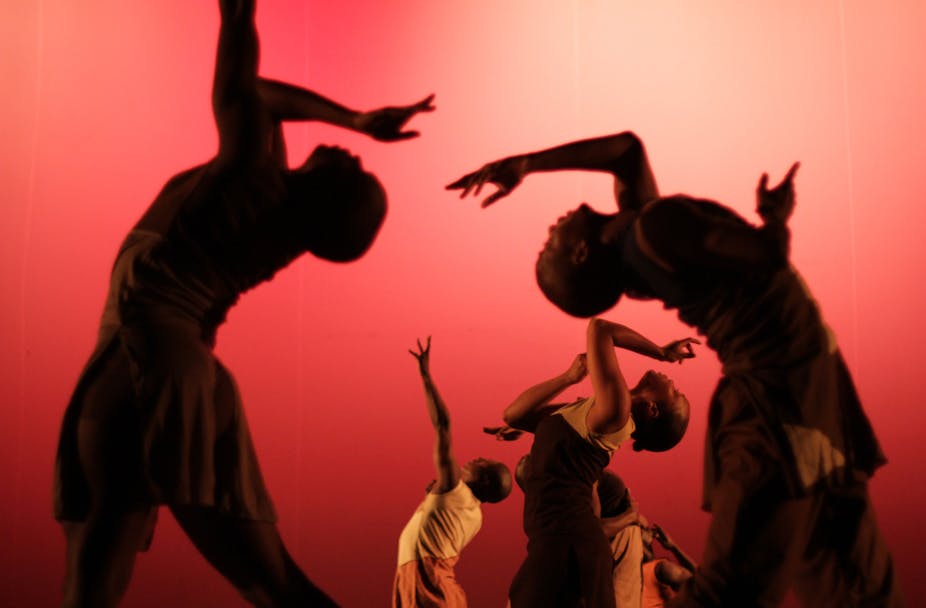A close examination reveals that representation of women in corporate boardrooms in South Africa still leaves much to be desired.
This is particularly so in the creative and cultural industries. Here, women leaders are rare, and thus their experiences and perspectives –- and those of the women down the ladder –- are scarcely represented.
The structural challenges women face were evident in the first-ever National Mapping Study of the creative and cultural industries released in 2014. A sample of 2,500 firms were interviewed about their ownership and employee demographics, among other things.
A reanalysis of data from the National Mapping Study of the Creative and Cultural Industries shows that women owners are far better represented in some of the six Unesco cultural domains than in others. For example, 58% of firms in the visual arts and crafts domain have at least one woman owner. Of these, 73% of craft, 45% of fine art and 28% of photography creative and cultural industries have at least one woman owner.
But the visual arts and crafts domain has the smallest average firm size. It also has the lowest average monthly turnover and the lowest percentage of firms that belong to a professional organisation. Other domains, like audiovisual and interactive media (including film, TV, podcasting and video games), have a much lower percentage of female owners (31%), reflecting ongoing male domination.
The structural challenges that women face include:
funding and budget constraints
marketing and market access
inconsistent and unpredictable demand
Gaps and gains
The survey showed at 52% of employees in the creative and cultural industries in South Africa are women. They are particularly under-represented in terms of ownership - only 45% of firms in the survey had at least one woman owner.
And as Zama Mkosi, National Film and Video Foundation chief executive argued in a recent article, the gender gap goes beyond leadership roles and into cultural reproduction. Here it is reflected in a lack of strong women narratives in film roles.
The trend is global as much as it is local, where generalised creative and cultural industries labour and employment patterns are mirrored in South Africa, manifesting specifically in a gender pay gap.
The Status of Women in the South African Economy 2015 report found that women are more likely to be employed in low-skill occupations. Their earnings also remain lower than those of men. This is despite gains in education levels in recent years.
Using film to change minds
Mkosi believes funding, mentoring and training are some of the key challenges women face in the sector. The National Film and Video Foundation is trying to shift the tide by running women-focused programmes. Between 2012 and 2015, 43 film projects by women were funded by the foundation, all of which spread diverse perspectives and “chipped away at stereotypes about black women perpetuated by one-sided views in films and television”.
Despite this, Mkosi says that there are still some evident gaps, including:
Lack of ownership;
Lack of strong women narratives in film roles;
Limited access to financial resources;
Limited knowledge about the business side of the cultural sector; and
Lack of opportunities.
Sector perspectives
Sector-wide women-focused advocacy is critical. As Mkosi argues:
While we may not eradicate the barriers to women’s empowerment in the short-term, we can certainly reduce the occurrence of obstacles that prevent women from participating in South Africa’s cultural economy.
This point was made during the 2016 National Arts Festival in Grahamstown where Arterial Network hosted the “Empowering Women as Cultural Leaders Roundtable”. Arterial Network is a civil society network of artists, cultural activists, entrepreneurs, enterprises, NGOs, institutions and donors active in Africa’s creative and cultural sectors.
The roundtable explored challenges, strategies and solutions to empower women for leadership roles in the African creative sector. Top sector leaders, Ernestine White (Iziko South African National Gallery), Lliane Loots (Flatfoot Dance Company), Lara Foot (Baxter Theatre) and Jade Bowers took part in the discussion.
The overall sentiment was while the industry has changed, there are still significant barriers. Bowers observed that
It is difficult for women to get cast in works you don’t write or produce yourself – especially as a coloured woman – and there is a dire lack of more nuanced roles.
Foot said women have to constantly find ways to manipulate the system:
It’s exhausting to deal with discrimination all the time, so you find loopholes. Quotas are controversial, but they are an important way to force a system to change.
Women in the industry also need to deal with mistrust, says White:
There is a tendency to mistrust my abilities because I’m a black woman.
Arts and gender activist Tracey Saunders says in recent years there has been an increase in the number of women directors in the theatre. But this has happened “without any concerted intervention” and that a deliberate and coordinated initiative by women in the performing arts is required to make progress in addressing the sector’s gender disparity issues.
Both the reports and women working in the South African creative and cultural industries acknowledge that the hard work of thinking about a new way for women to occupy space is needed. While some of the early steps have been taken, there is still a distance to go.
Some positive change
The National Film and Video Foundation women’s programme and the National Arts Festival productions are examples of positive change. Where such changes have been made it is important to reflect on the processes and activities that led to the pro-women shift.
In this way more women – and men – across the creative and cultural industries can use their power and influence to create the groundswell needed to bring equity in the industry. This will enable creative South African women to share in its economic benefits.

